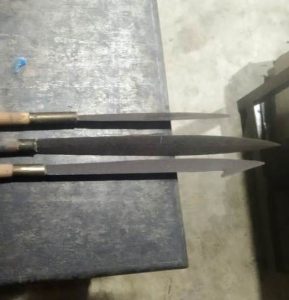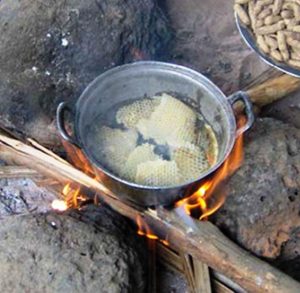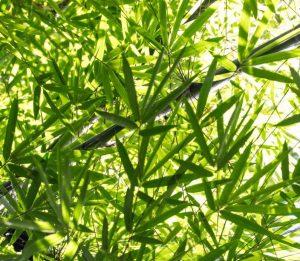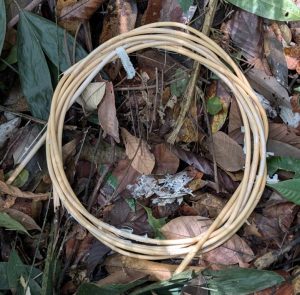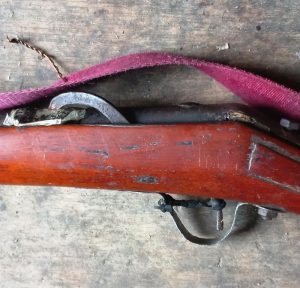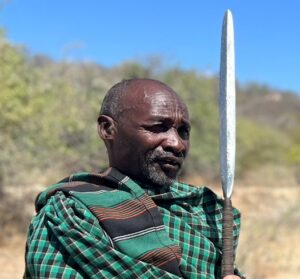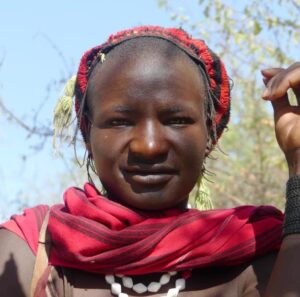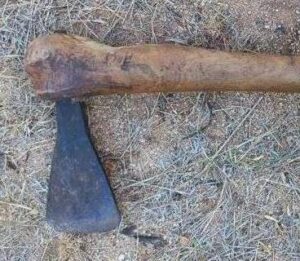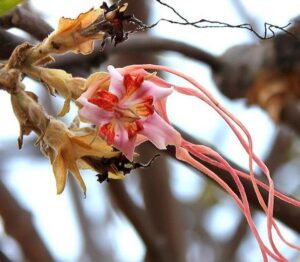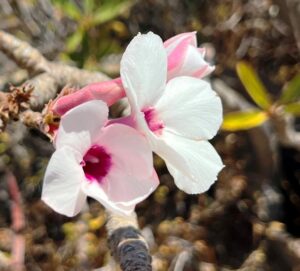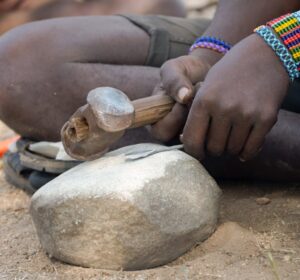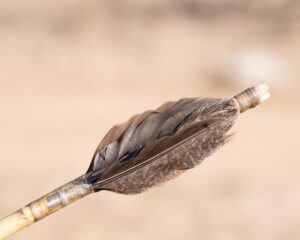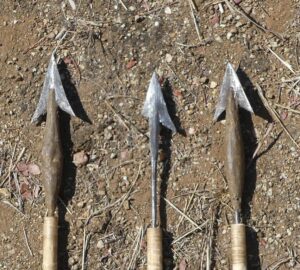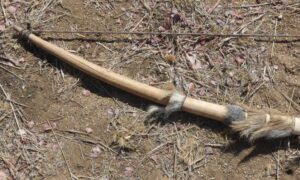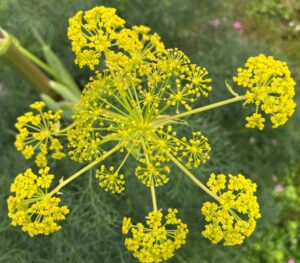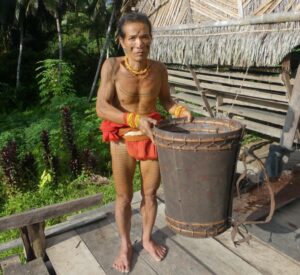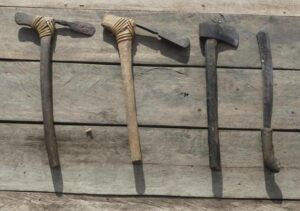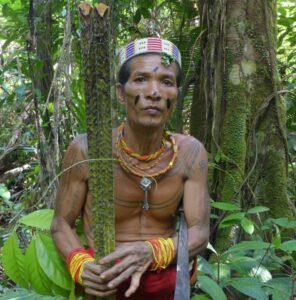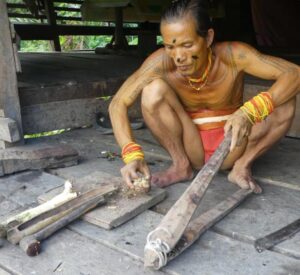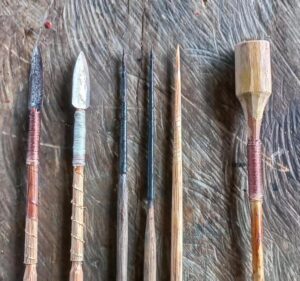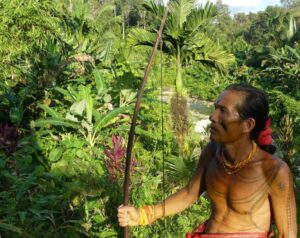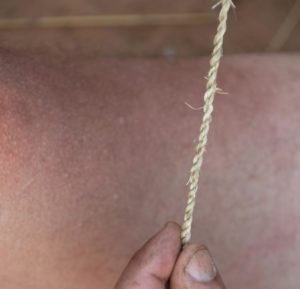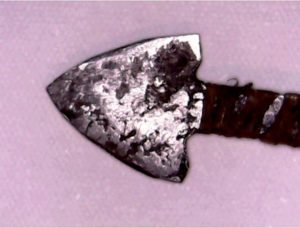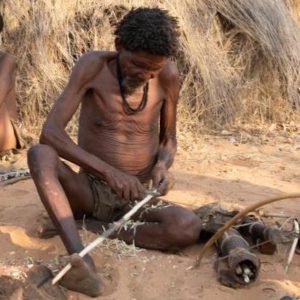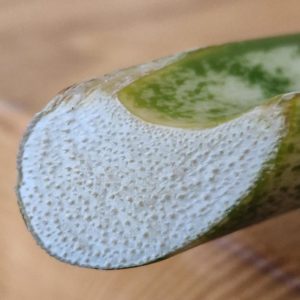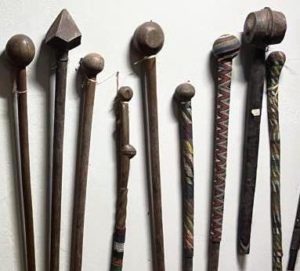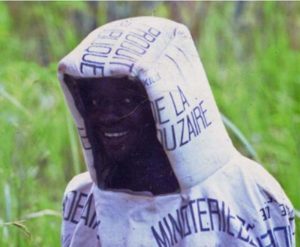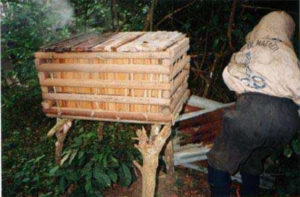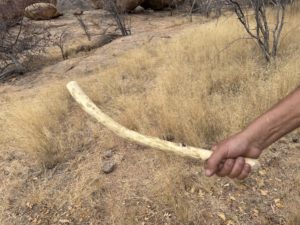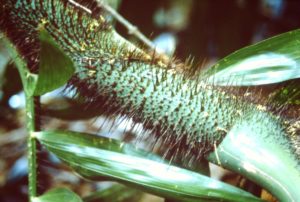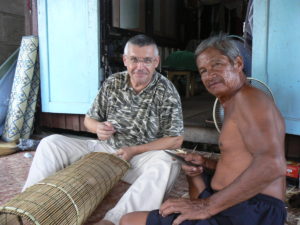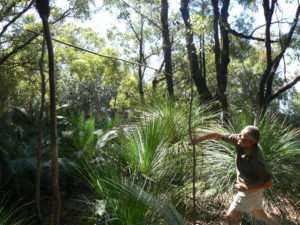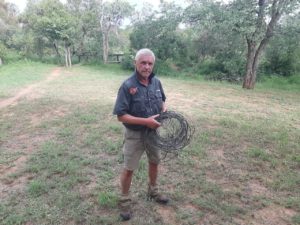Tools & Gear
Mentawai spears
When hunting with a pack of dogs for deer, wild boars, or monkeys, three types of weapons can be used to finish off the cornered game. One is a bow and arrow, which, however, is not safe for dogs during…
How to Extract Pure Beeswax: A Simple Guide to Rendering Honeycombs
Beekeeping provides two valuable harvests: honey and beeswax. While honey is the primary product for many, beeswax is a versatile byproduct used to make candles, waterproof coatings, and medicinal salves. However, raw honeycomb is often contaminated with impurities, including bee…
Bamboo: The Orang Asli’s natural toolkit
If rattan is the skeleton of Orang Asli junglecraft, bamboo is the toolkit. From riverbanks to misty hill slopes, clusters of bamboo mark places where people have worked, cooked, travelled, and sheltered for countless generations. To an untrained eye, most…
Rattan: Flexible raw material from the forests
Deep in the lowland dipterocarp forests of Peninsular Malaysia, long before you see rattan, you feel it. Hooks catch on shirt sleeves, flagella tug gently at your backpack, and the forest floor is littered with the thorny sheaths of climbing…
Improvised firearms of the Orang Rimba people
Improvised firearms are the new hunting weapon of choice for the wild living Orang Rimba people in Jambi province, Indonesia. In one of the following articles, I will present their traditional hunting techniques and typical hunting weapons. Here, I will…
Datoga spears
These spears have a long history but were replaced for hunting by bows and arrows in modern times. Nowadays, their primary purpose is personal protection against predators when traveling on foot for longer distances. The author encountered a couple of…
Bow hunting equipment of the Datoga tribe
Datoga people are spread over a wide area on the Masai steppe in Northern Tanzania. Their main stronghold is around Lake Eyasi. There, especially in the Yaeda Valley, they live close to the Hadzabe people. Masais pressed Datogas into less…
Hadzabe Axes
Hadzabe axes are part of the standard outfit of every Hadzabe man living in remote areas. This outfit consists of his bow, a bunch of arrows of various types, a firestick, his knife, and the axe. Additionally, he will carry…
Hadza Arrow Poison – Strophanthus and Acokanthera species
Arrow poison based on Adenium sp. plant extracts was covered in a former article on this website. In the following, we will discuss the second type of poison the Hadzabe people make, which they call Shanjoko, a Strophanthus species. Additionally,…
Hadza Arrow Poison made from Adenium species
Remotely living Hadzabe people use three types of arrow poison to bag big game animals. However, due to the shrinkage in the size of their areas, they currently produce only two kinds. I will describe these arrow poisons briefly to…
Cold-forging of iron arrowheads
The Hadza people, who live in remote areas, produce iron arrowheads themselves. Contrary to what is often mentioned in the literature, they do not buy these iron arrowheads from the Datoga people. Both tribes used different production methods. Whereas the…
Hadzabe arrow shafts and fletchings
Arrow shafts are a piece of Hadza men’s identity. Remotely living Hadza men always carry their bows, arrows, and firesticks. Whenever they have leisure time, they attend to their arrows by building new ones, checking and correcting their straightness, or…
Types of Hadzabe Arrowheads
Hadzabe people use four basic arrowhead types, which are further divided into different styles. All of these types and styles serve specific hunting applications. 1st basic type of Hadzabe arrowheads: Wooden arrow tips These types of arrowheads are called hik’o…
Hadza bows for hunting
Hadza bows are not only used for hunting but are also ubiquitous adornments for nearly all Hadza men. They even carry their bows, arrows, and firesticks around when they are not going to hunt. The bows are often short-lived and…
Giant Fennel stalk wood as building material
Giant Fennel (Ferula communis) is a common weed in Mediterranean countries and Central Asia. Except for one genetic variety in Sardina, all green parts of the plant are strongly haemotoxic and lead to the poisoning of livestock and humans. This…
Carrying baskets of Mentawai people
Mentawai people use five types of carrying baskets, which they call Opa, Tuku, Jarakjak, O’orek, and Bolokbok. Opa – the standard-sized carrying baskets. Opa are the most popular type of carrying baskets. They are entirely woven from Calamus javensis rattan vines collected from…
Cutting- and chopping tools at Siberut Island
The cutting- and chopping tools used by forest dwellers include adzes, axes, machetes, and a specialized knife. All of these tools have a strong historical background and are still in use today. Axes People primarily use axes (Oggut) to fell…
The Use of Rattan Leaf Stalks as Coconut Graters in Mentawai Culture
Rattan leaf stalks have been, since immortal times, the tools with which Mentawai people have been grating coconuts. These long-lasting tools grate the coconuts into the required size of flakes. When worn out or broken, a new one will be…
Mentawai arrow poison
The Mentawai people use poison on their arrows to hunt game. In previous articles on this website, we discussed the Mentawai people’s hunting methods. Then, we presented an actual hunt for Flying foxes. We then discussed the longbows used on…
Hunting arrows and quivers of the Mentawai people
Bows and arrows are the primary hunting weapons used by the Mentawai people. Their bows were already described here. This article will explain the different types of arrows used for these bows and give an insight into the quivers used….
Mentawai Hunting bows
Hunting bows are the primary hunting weapon for the Mentawai people and are very personal items for a hunter. They have excellent skills in using them and practice shooting from childhood onwards. During my stay with the Mentawais, I looked…
Making bow strings from plant fibers
The manufacture of bow strings from plant materials is a skill that Bushmen have practiced for a relatively short period. Around 1900, they learned from neighboring Bantu-speaking tribes how to use Sansevieria fibers to create bow strings. Before this, they…
Composition of Bushmen Arrows
The topic of the composition of Khoi-san (Bushmen) arrows for hunting is vast and intricate. Numerous anthropological studies have documented the unique designs utilized by nearly every family group of Khoi-san in Southern Africa. These designs are often a result…
Making bushmen bows for hunting
Generally speaking, the Khoi-san (‘Bushmen’) employ bows and poisoned arrows for “tracking and stalking” during hunting in Northern Namibia and North-Western Botswana. The various Khoi-san tribes utilize different materials and techniques for crafting these weapons. However, in this article, we…
Sansevieria leaves and their uses
Sansevieria and its leaves were a genus of flowering plants originating in Africa and southern Asia. This former genus comprises approximately 70 species, commonly known by English names such as mother-in-law’s tongue, bow string hemp, snake plant, and snake tongue….
Knobkerries at a Museum in Hluhluwe
Knobkerries are straight, wooden clubs with a knob on one end. Together with assegais (throwing spears), they are the symbols of various African nations. These two weapons are part of the South African Coat of Arms, introduced in April 2000….
Beekeeping Safety in the Bush: Improvised Veils, Suits, and Smokers
Locally made-up smokers and overalls are used for inspection or harvesting the hives as improvised equipment. These have also become expensive and are often shared by a group of beekeepers. Improvised protective overalls A protective bee suit enables the beekeeper…
Low-Cost Beekeeping: How to Build Alternative Beehives in D.R. Congo
In recent years the shortage and expense of timber and corrugated iron sheet have encouraged people to use alternative materials for beehives. The range of substitutes includes old 200-liter fuel drums cut in half. Their ends removed, and their sides…
Throwing sticks as weapons in the African bush
Kerries combine throwing sticks and wooden clubs as everyday tools for hunting, defense, and digging in Southern Africa. Australian aboriginals used a refined form of throwing sticks, flattened over its whole length and called ‘Kylie’ by them. Eventually, boomerangs evolved…
Rattan vine in Africa – Calamus deerratus
Synonym C. laurentii; Common names Nkau (Kongo), Rotin (Fr.), Rattan vine Description A slender to moderately robust rattan palm, climbing up to 20 m high and often forming dense clumps. The stems and leaves are armed with spines. Stems have…
Crafting a bamboo fish trap in Thailand
Learning the craft of bamboo fish trap weaving The correct English wording for a ‘Lop’ in Thai would be ‘Horizontal cylinder trap with entry cone’. It is used to catch various freshwater fish and crustaceans, including small snakeheads, catfish, shrimp,…
Spear shafts from grass tree stalks
Grass trees (Xanthorrhoea sp.) and grass tree stalks are endemic to Australia. They are locally called ‘Black Boys’ due to their appearance after bushfires. They need a certain number of regular fires for their survival and are well protected against…
The Dark Side of Tradition: Why Modern Bushcrafters Should Avoid Native Snaring Techniques
The world of bushcraft often leans toward a romanticized view of indigenous skills, treating “native” methods as the pinnacle of sustainable living. However, there is a stark difference between survival and conservation. Nowhere is this divide more apparent than in…

